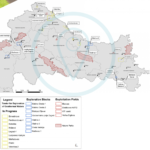Bioenergy Project Development: Sometimes, it’s Okay to Teach to the Test
Energy Disrupter
The development of bioenergy projects is so variable and filled with uncertainty that it’s easy to give up on any kind of organization or structure in the process.
ADVERTISEMENT
The development of bioenergy projects is so variable and filled with uncertainty that it’s easy to give up on any kind of organization or structure in the process. It takes very little time to learn the key elements of a successfully developed project, but a staggering amount of work to check all the boxes.
Since a decent project opportunity begins with a few key elements nailed down, it’s usually the easiest to achieve project opportunities that immediately explode into an endless horizon of details. It is to the benefit of all partners involved, whether finance, construction, operation, commercial partners, regulators or the community, that the developers organize the unorganizable. So, faced with a vast universe of constantly shifting project components, what does bringing order from chaos look like?
Development Defined
Before diving into how project development gets organized, it is worth reflecting on what “development” even means. I’ve been asked this question countless times. The best answer I have come up with isn’t pithy.
Imagine if every project you completed at your job needed to be a stand-alone profitable business.
Like any business, it will need:
● Sourcing and pricing for supplies and materials.
● Clear and compelling predictions of sales and revenue.
● Staff and service providers, and their respective costs and roles.
● A suitable site.
● Permits and permissions.
● Plans for maintenance and upkeep, including costs.
● The right to use needed technology.
● Design and engineering for the facility plan.
● A construction provider to build the facility.
● Support of local stakeholders (government, related industries, labor and commerce groups, site neighbors, advocacy groups).
● Financing.
It is turning the clay of opportunities, ideas, capabilities, market drivers and economic analysis into a useful piece of pottery that makes money.
Financing: Last But Not Least
It’s amazing how often that last bit gets glossed over or taken as fiat. Financing is last on the list not because it’s least important, but because all other items must be in place (or identified to the satisfaction of the financing party) before the project can begin construction.
Financing a project can involve hundreds of documents, pages and pages of Q&A, and very detailed checklists. At Nexus PMG, we’ve found the best way to achieve successful project finance is by borrowing a much-maligned educational term: teach to the test. While a short-sighted and harmful pedagogical approach for sixth-grade math, it is an excellent guiding light for bioenergy projects.
There are five pieces of end work product:
1. An independent engineer’s report.
2. An engineering, procurement and construction (EPC) contract.
3. An operations and maintenance (O&M) contract.
4. A financial model.
5. A data room.
Drawing on our collective decades of experience with each of these, we use a series of organizational tools to begin filling them all out on day one. Most of us are engineers, project managers, operations experts or financial analysts, so we are familiar with what these materials should contain. Our project evaluation tools immediately zero in on how close a project is to completing these deliverables, and our scheduling and budget tools immediately set them as the goals for completion.
The closer project development resembles an engineering scope of work, the better. Tools such as FEL-style stage gating and logic-driven schedules with sub-tasks help a great deal. Every project that reaches a certain level of maturity gets assigned to one of our professional project managers, and the lead developer retains only certain roles and responsibilities. The proper place to reconcile a permit matrix and schedule with an equipment selection process is a project manager’s desk, not a developer’s notebook on a plane heading to 10 meetings in two days, half of which require boots.
Of the many benefits to this approach, one worth noting is the flushing out of mutually exclusive choices. Many project development efforts find out too late in the game that key assumptions conflict with each other. Output assumptions require larger equipment than expected or exceed permit limits.
A key utility connection does not easily interface with a design choice. Every assumption in the financial model must be supported with compelling backup materials, or the independent engineer is going to flag that assumption as risky. Even a few low marks can delay or disrupt project financing.
Despite all this, development remains as much art as science, risky and ever-changing. There is truth to the maxim “No plan survives first contact with the enemy,” but planning still helps immensely. We have the tests we will need to pass, and we have the checklists. The sooner we use them to formally frame our thoughts and actions, the better off our projects are.
Author: Ted Niblock
Vice President, Project Development
Nexus PMG
nexuspmg.com
















